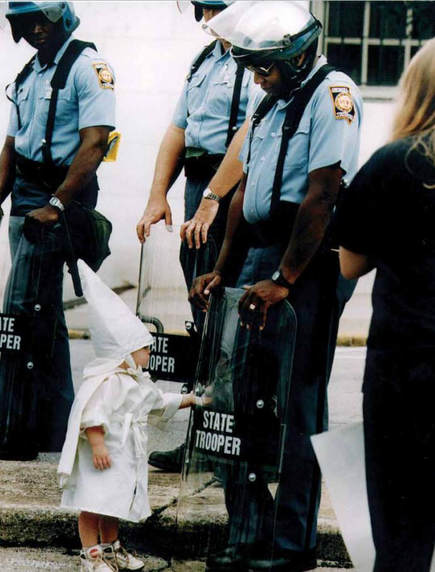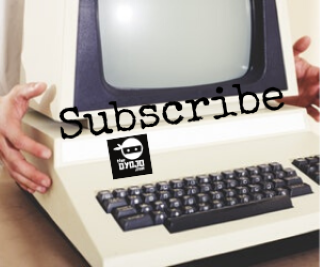 You have them on board (recruitment), now it's time to on-board (development) You have them on board (recruitment), now it's time to on-board (development) In the progression of building a team, by the time you reach the on-boarding phase you have done much of the initial heavy lifting. Where in years past candidates would seek out your organization looking for an opportunity for employment, the tables have now turned and most companies are actively engaging in proactive recruiting measures. According to Fit Small Business, a 2017 study from Hire Well noted that, “52% of hiring managers claim that passive candidate recruitment has been less effective.” When your corporate and/or local listing are competing not only with a void in the labor market of available candidates but also the likes of professional recruiters on sites such as LinkedIn, your traditional methods of recruitment are going to lose their effectiveness. Employers that are looking to add talent to their organization are going to have to adopt the posture of hunters who understand their target and are adapting to the surroundings which would include a shortage of prey. One quick tip is to expedite the screen process through simple means such as texting candidates as introduced in our article, Text For Hire. If you have new employees to on-board into your organization than you have at least been able to chip away and some fragment of the quantity issue. You have increased your headcount, even if that is only one employee, which is something many companies are struggling to do. This deserves at least a golf clap. Now we want to begin the quality aspect of team additions, we want to create an entry experience that excites them to engage in the organization’s mission. In their book, Insuring Tomorrow, Tony Canas and Carly Burnham work to bridge many of the gaps between organizations and millennial employees. Tony and Carly have some practical tips for the first day and orientation throughout their book in addition to reversing a myth about millennials and criticism, “They’re absolutely comfortable with getting constructive feedback, but worry much more if they get no feedback, which is what is truly demotivating for a Millennial (p 58).” When on-boarding new team members, those in positions of leadership should correct bad habits and details early. As the Hall of Fame UCLA basketball coach John Wooden states, “A coach is someone who can give correction without creating resentment.” If your hiring process has enabled you to attract candidates that connect with your organizational mission and values then this tone of coaching should already have been outlined. The right additions want to know how to do things the right way and how to excel in their roles within the team. Honest feedback is good feedback when progressing towards a goal. If there is push back on the feedback given, leaders will need to determine whether there was a miscommunication, an inability or an unwillingness as outlined in our article Conflict. Each response requires a different approach and will result in a different outcome. All of our processes should be geared towards creating clarity as a lack of clarity is the prime catalyst for the corrosive effects of confusion and explosive tension of negative conflict. As we establish clarity in our vision, our values and our systems then we can develop consistency in our processes as well as accountability in our organization. Every phase is important and clear communication is essential from recruitment, to on-boarding and on through employee development. Be clear about your values and consistent in your approach and the process will create team members who are engaged and able to assist with building accountability throughout the organization. // References // 1) Fit Small Business; 2) Insuring Tomorrow
0 Comments
 Charge your phone up, if you're recruiting - you will need it! Charge your phone up, if you're recruiting - you will need it! Is there any value in texting with regards to recruitment? Yes. If you doubt this then take a minute to think about what you can learn as well as what you can eliminate through a few key texts. If we use a rough analogy of fishing with relationship to acquiring talent, we want as many lines in the water as possible in our quest for individuals who can add value to our team. Texting provides us a tool that can expedite the communication process so that we can be clear, consistent and expedient in our initial screening. 1) Text enables us to reach out to a potential candidate to gauge their interest and responsiveness - "Saw your posting on Craigslist, are you still looking for employment?" If there is no response you have just reduced your follow up list. If there is a response then you have a fish nibbling at the bait. As a sidenote, understand that many candidates have not been mentored on how to professionally respond to texts, don't be surprised if you get responses which include some variation of, "How much do you pay?" If you remember that the text gives us a quick means of screening applicants, then I would encourage you to respond either with, "What salary range are you looking for?" or be specific, "Depending on experience the range is typically between $x - $X." If a respondent seems rude you can choose to discontinue the process but you may want to dig a bit deeper to ensure both parties have a complete picture of each other. Texting does not always provide the richest context for discerning a persons character. 2) Text enables us to provide a concise outline of what the duties of your open position(s) are to further determine if the responsive candidate would be interested in the opportunities your organization is offering. "We have an open position for X, the duties include [fill in the blank - BRIEFLY]." If there is no response, our work with this individual is likely complete. If there is a response then we want to draw them in closer to the boat. 3) Through text we have determined that we have a candidate who is indeed interested in work and is open to the opportunities that our organization can offer, now we get into specifics such as company requirements. "Our company requires the following [fill in the blank with a BRIEF list] to qualify for employment." If there is no response, there may be a good reason this candidate cannot find work. If there is a response then we want to get a look at what we have on the line. Our texting has revealed that we have a responsive and interested candidate, that this individual is open to the opportunities that we have available and they can meet the basic requirements for employment that our organization has set as a foundation. What do we do next? Time for a phone call. So, we text them, "When would be a good time to set up a phone interview?" If at all possible this should be conducted as soon as possible. You potentially have what you have been looking for so do not lose what you have on the line by waiting too long. If you have successfully made contact with a potential candidate you will need to be prepared to expediently move your process with that individual into determining the quality of that potential hire. Depending on how wide you have cast your net, you will need to be prepared to think outside of the box with regards to a candidates direct experience with your industry versus their potential to adapt their character and relevant work experience into the responsibilities you are assessing them for (You can read more on this topic in our prior article on Attracting Talent). Texting is a great tool to enable a recruiter to expediently get fish on the line as well as determine which ones are catch-and-release. Connecting with recruits requires a significant commitment of time, of those candidates we are able to make contact with many will be unable to be hired or they will not the best fit for the team needs. We want as many lines in the water as possible because we are always fishing for good talent to add to our team. In our recruitment process we need to be efficient so that we can communicate clearly and respond quickly when we have attracted someone who can add value to our mission. You can stand at the banks and curse the water for the lack of fish or you can start casting.  Photo by Todd Robertson, 9/5/92 in Gainsville, GA Photo by Todd Robertson, 9/5/92 in Gainsville, GA Like many, I discovered this image through social media where it was originally attributed to the recent events in #Charlottesville, Virginia. As many have since reported, the law enforcement uniforms seem to be older than 2017 and the origin of the photo has been tracked down to an incident in Gainesville* from the 90s. While that piece of information as it relates to facts is important the picture holds power in the sense that it captures the tension of our current reality in the United States. In my view this picture screams to the responsibility and high calling of parenting. The age-old question of nature verses nurture is being challenged in this photo as the child has no concept of what they are wearing or representing and curiosity is driving the young one to cross the line of philosophical division that their parents are raising them under. The photograph stands as a piece of history as well as a moving piece of art with themes of innocence, racism, humanity and the tension that still exists in our society. That this picture is possible in modern and progressive civilization is disturbing to say the least. And yet, if like me you are disturbed or surprised perhaps we should do a better job of listening. We have come so far and yet we have so much further to go. Rather than become bleak about the implications of this photograph, the power of the image should speak to all parents in relationship to their essential work in shaping the foundation of values for those developing minds in their care. The negative messages in our culture have so much volume and frequency that it is difficult not to lean towards a fatalistic view of humanity. Yet, there is great hope in this same photograph in that first there is a force within this young child that transcends their social programming and secondly, as much as parenting can be a foundation for negative messaging it also has great potential for positive momentum. If you are a parent and you wonder how you can make a difference in the world, your greatest force for good in the world is developing under your umbrella of influence. A child’s nature includes a proclivity towards being a stinker which all parents are familiar with, but the roots of racism have to be watered (nurtured) by family, friends and social affirmation. Even though parents are tired from the 24/7 duties of parenting and may doubt whether there is much more that can be done with the limited time that they have, there is hope. By being intentional with those essential years that the young humans in our care are within our direct sphere of influence we can have a significant and enduring impact on making the world suck less (#MTWSL). If you are a parent who is doing their best to handle their business and raise humans that will be a force for good in the world – keep doing good things! *From what we could find, this photo originated from a KKK rally held on September 5, 1992 and is credited to Todd Roberston, read more from Poynter HERE.  Loyalty. Quality. Quantity. Millennials. Loyalty. Quality. Quantity. Millennials. Are you a non-Millennial who has used some variation of the phrase, "Quality over quantity"? Are you a non-Millennial who has lamented about the good ol' days when employees were loyal? If you are in a position of leadership and you believe that quality is more valuable than quantity (or at least have said so publicly) and you struggle to find a connection with the new generations of workers arising in the marketplace, maybe we can help with some perspective. In an article published with YFS Magazine earlier this year, How Leaders Manage High Employee Turnover, we elaborated on some of these thought streams held by individuals who are in positions of leadership. Those in leadership who are frustrated with team development issues may find that if they engage their teams as they may find the answers are closer than they thought. As noted in the publication, how odd it is that those in leadership often seek the limited perspectives from those in their own peer group which results in only further widening the disconnect with younger generations rather than expanding their input base to include those who may assist with perspective expansion that coudl lead to real changes. Often the frustration between employer and employee centers around some aspect of loyalty, for example, “Employees just aren’t loyal like they used to be.” What is often missed is that organizations are not as loyal as they used to be either. The marketplace has changed which means companies and compensation packages have changed, therefore employment agreements have changed. Younger generations have seen what loyalty does to a long-term employee, i.e. their parents generation, who has been unceremoniously dumped by the company they gave life and limb to (sometimes literally) before their lucrative retirement package comes due. If you are a tenured employee who has risen in the ranks of an organization, you of all people should be able to identify with the lack of trust engendered by corporations where no one is safe. Millennials do not interpret these conditions as a mechanism for fear of investing themselves in an organization but they are savvy to market realities and will not be asked to produce a formal level of loyalty that doesn’t exist from the other end of the contract. We live in the era of “at will employment” which Millennials are in agreement with, it seems that organizations are the ones struggling with this fact. In their practical guide to “engaging Millennials in the insurance industry”, Tony Canas and Carly Burnham share insights that are applicable to all organizations through their recent publication titled Insuring Tomorrow. Addressing the topic of loyalty, the authors highlight a key perspective, “Millennials have a different definition of loyalty than previous generations did. For Boomers loyalty means, ‘I came, I stayed for 30 years, and I got my gold watch.’ For Millennials, loyalty means, “I worked very hard while I was there (p.27).” If we filter this statement back through our opening question about quality versus quantity, which generation applies that standard more accurately to their working definition of loyalty? If we can gain the perspective that for a Millennial worker, and for the current work environment, trust has a different meaning then we will understand that:
The next time you are tempted to score a Millennial lowly for their loyalty to the organization, ask first, is our team loyal to them (by a measure of quality over quantity) and secondly, is this individual giving their best effort while they are working with our team (also by a measure of quality over quantity). Tony and Carly offer further insights into engaging Millennials, “You need to understand that they’re comparable to a different culture, and as such, they communicate differently.” Those in a position of leadership understand that all individuals are unique, what works for engagement with one team member will not have the same results with the next one. The Millennial generation has some cultural distinctives, such as the aforementioned definition of loyalty, that create unique challenges in dealing with a group of employees. This is why managers are paid the moderately higher bucks – to learn to inspire, challenge and lead a team to achieve its vision by engaging their team members. Loyalty isn’t dead, it’s just been redefined. The changes in the work environment have been created as much by organizations as it has by the upcoming generations of workers, all parties need to work together to create success for their teams. The Millennial definition of loyalty will benefit all parties if applied from top to bottom and bottom to top as a qualifier. |
AuthorThoughts on personal and professional development. Jon Isaacson, The Intentional Restorer, is a contractor, author, and host of The DYOJO Podcast. The goal of The DYOJO is to help growth-minded restoration professionals shorten their DANG learning curve for personal and professional development. You can watch The DYOJO Podcast on YouTube on Thursdays or listen on your favorite podcast platform.
Archives
March 2023
Categories
All
<script type="text/javascript" src="//downloads.mailchimp.com/js/signup-forms/popup/unique-methods/embed.js" data-dojo-config="usePlainJson: true, isDebug: false"></script><script type="text/javascript">window.dojoRequire(["mojo/signup-forms/Loader"], function(L) { L.start({"baseUrl":"mc.us5.list-manage.com","uuid":"b9016446bd3c6a9f0bd835d4e","lid":"83282ffb9e","uniqueMethods":true}) })</script>
|
Jon Isaacson |
Connect. Collaborate. Conquer.
© COPYRIGHT 2015. ALL RIGHTS RESERVED.
|



 RSS Feed
RSS Feed